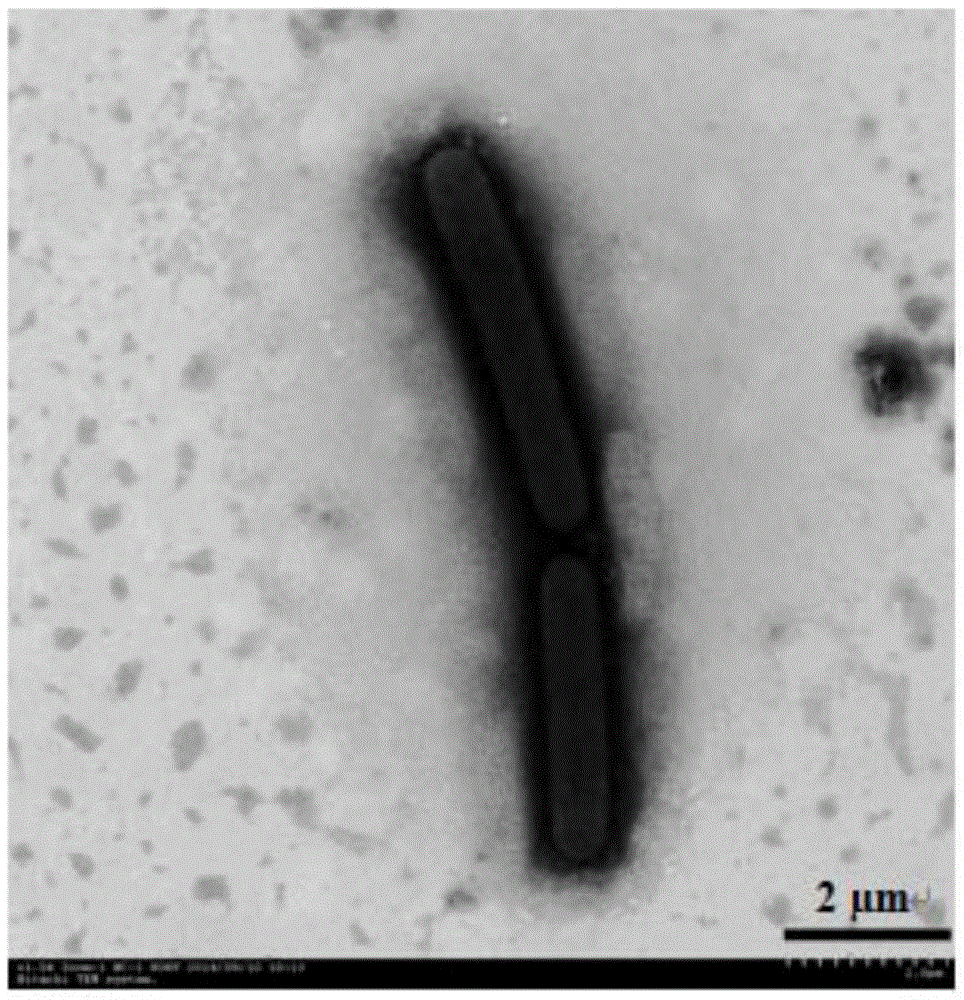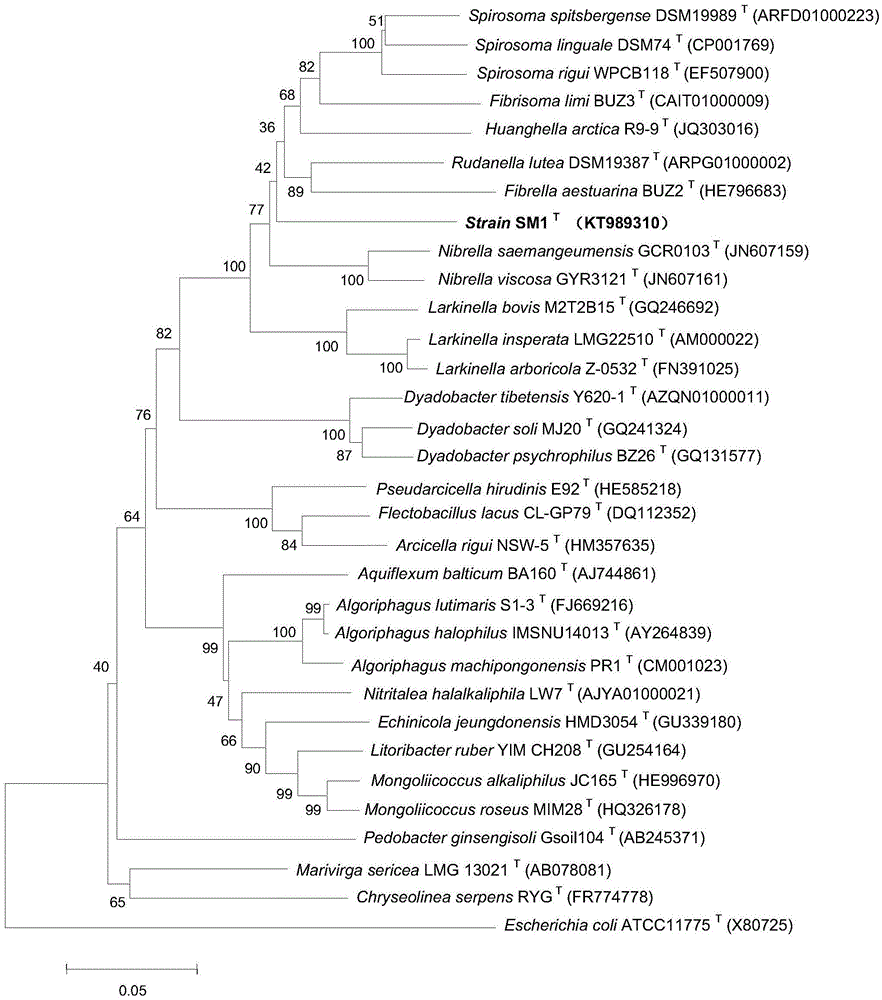Aerobic arsenic methylation bacterium SM-1 of cytophagaceae and application of arsenic methylation bacterium
A fibrous and methylation technology, applied to aerobic arsenic methylating bacteria SM-1 and its application fields, can solve the problems of difficult arsenic pollution control, no soil culture experiments, and no ability to volatilize arsenic. , to achieve the effect of reducing the harm
- Summary
- Abstract
- Description
- Claims
- Application Information
AI Technical Summary
Problems solved by technology
Method used
Image
Examples
Embodiment 1
[0025] Example 1: Enrichment of soil samples and isolation, purification and preservation of arsenic methylating bacteria SM-1
[0026] Take 2 g of paddy soil from Shimen arsenic-contaminated areas and add it to 100 mL of enrichment medium. The composition of the enrichment medium is (g / L): ST10 -1 (0.5g peptone, 0.05g yeast extract), 0.5% glucose, 10 μMAs (III). The medium was placed in a shaker at 200 rpm and 30 °C for one week, and 5 mL of the enrichment solution was taken out after one week and transferred to a new 100 mL enriched culture set. The culture was continued under the same culture conditions. The above transfer process was repeated twice. Finally, 2 mL of the enriched solution was taken out for speciation analysis of arsenic. Before the samples were used for detection, they were centrifuged at 12,000 rpm for 2 min, and then passed through a 0.22 μM filter. High performance liquid chromatography-inductively coupled plasma mass spectrometer (HPLC-ICP-MS) was used...
Embodiment 2
[0027] Example 2: Identification of bacterial species
[0028] (1) Determination of physiological and biochemical properties:
[0029] Table 1. Physiological and biochemical properties of strain SM-1
[0030]
[0031] Note: + means available; ‐ means not available
[0032] (2) Molecular biological identification
[0033]Use the CTAB method to extract the total bacterial DNA, use the DNA as a template, and use the universal primers F27 and R1492 PCR to amplify the 16SrRNA gene of the strain, recover and purify the PCR product of about 1500bp, connect it with the carrier PMD18T and transform it into Escherichia coli In DH5α, positive clones were selected and sent to the sequencing company for sequencing, and the returned sequence was input into NCBI for Blast comparison with other 16SrRNA gene sequences. The sequence has been submitted to NCBIGenBank with accession number KT989310. Combined with the results of the above physiological and biochemical characteristics and 16...
Embodiment 3
[0034] Example 3: Detection of arsenic methylation and volatilization ability of bacterial strains under laboratory conditions
[0035] R 2 The components of medium A are (g / L): yeast powder 0.5g, tryptone 0.5g, casamino acid 0.5g, glucose 0.5g, soluble starch 0.5g, dipotassium hydrogen phosphate 0.3g, magnesium sulfate heptahydrate 0.05 g, sodium pyruvate 0.3g. Inoculate the strain SM-1 in 100mL of the above-mentioned liquid medium, and cultivate it on a shaker at 37°C and 200rpm for one day and night to make the OD of the bacteria 600 When the value reaches 1.0, 1 mL of the seed solution is taken out from the seed medium and added to a new 100 mL of R with 10 μM As(III). 2 In liquid culture medium A, the treatments were repeated three times, and the transfer solution was continued to be cultured under the same culture conditions as above, and a solution sample was taken every 4 hours. After the taken solution was centrifuged at 12000rpm for 2min, the supernatant was filter...
PUM
 Login to View More
Login to View More Abstract
Description
Claims
Application Information
 Login to View More
Login to View More - R&D
- Intellectual Property
- Life Sciences
- Materials
- Tech Scout
- Unparalleled Data Quality
- Higher Quality Content
- 60% Fewer Hallucinations
Browse by: Latest US Patents, China's latest patents, Technical Efficacy Thesaurus, Application Domain, Technology Topic, Popular Technical Reports.
© 2025 PatSnap. All rights reserved.Legal|Privacy policy|Modern Slavery Act Transparency Statement|Sitemap|About US| Contact US: help@patsnap.com



